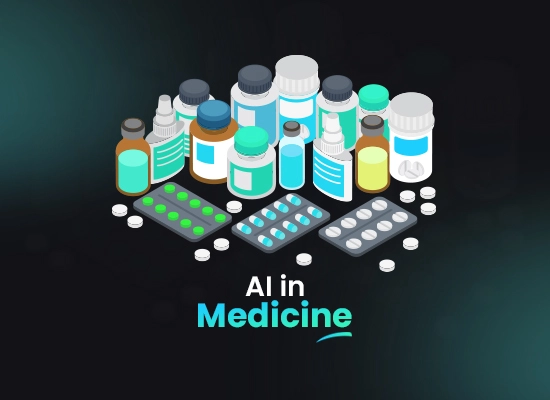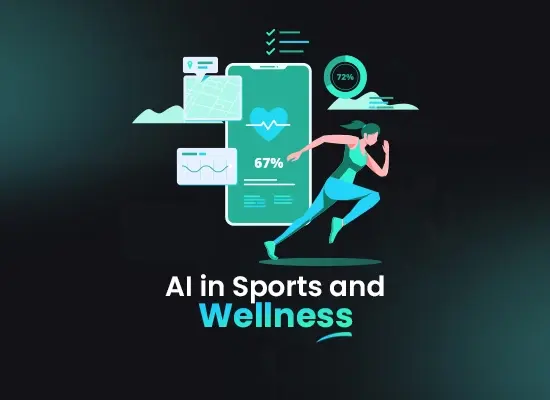What is Neural Network – The Future of AI in Businesses Defined

Contents
Neural networks are a fundamental component of deep learning, a subfield of machine learning that leverages artificial neural networks to enable computers to learn and make decisions from data. At the core of this technology is the neural network, a computational model inspired by the human brain’s interconnected neurons. In the realm of neural networks, various specialized architectures exist, including convolutional neural networks (CNNs) and graph neural networks, each designed for specific tasks and data structures.
A convolutional neural network, or CNN, is a type of neural network particularly adept at processing grid-like data, such as images. CNNs excel at feature extraction through convolutional layers, enabling them to recognize spatial patterns and hierarchical representations within visual data. An illustrative neural network example showcasing the efficacy of CNNs is image recognition, where these networks excel in tasks like object detection and classification.
What is Neural Network – Understanding the Differences:
Understanding the distinction between deep learning and neural networks is crucial. While neural networks represent the foundational building blocks, deep learning encapsulates the broader concept of utilizing multiple layers, often referred to as deep neural networks. Deep learning encompasses diverse architectures beyond traditional neural networks, emphasizing the use of deep neural networks for more intricate and sophisticated tasks.
In the world of machine learning, the comparison of deep learning vs neural network reveals that neural networks serve as a subset within the broader domain of machine learning. Machine learning encompasses a variety of algorithms and methodologies, whereas neural networks specifically pertain to the interconnected layers of artificial neurons. Thus, deep learning represents an advanced subset of machine learning, leveraging deep neural networks for complex problem-solving.
Furthermore, distinguishing between neural networks vs machine learning emphasizes that while neural networks are a subset of machine learning, the latter is a broader concept encompassing diverse paradigms and techniques. Machine learning embraces both supervised and unsupervised learning approaches, whereas neural networks, including convolutional neural networks, represent a specific method within this comprehensive field.
What is Neural Network – Current Advancements:
In recent advancements, graph neural networks have emerged as a powerful paradigm for processing graph-structured data. These networks enable the incorporation of relational information and dependencies within the data, making them particularly effective in applications like social network analysis and recommendation systems. Graph neural networks extend the capabilities of traditional neural networks to handle interconnected and non-grid-like structures.
In summary, neural networks, including convolutional neural networks, play a pivotal role in the broader landscape of deep learning and machine learning. Recognizing the nuances between deep learning vs neural network and neural network vs machine learning is essential for understanding their respective scopes and applications. Moreover, the advent of graph neural networks signifies the ongoing evolution of neural network architectures to tackle diverse and complex data structures.
Convolutional Neural Network:
In the realm of deep learning, Convolutional Neural Networks (CNNs) have emerged as a powerful paradigm for image processing tasks. A convolutional neural network is a specialized form of a neural network that excels at extracting features from structured grid data, particularly images. Let’s explore CNNs and shed light on their significance within the broader context of deep learning and neural networks.
To understand the prowess of convolutional neural networks, let’s delve into a neural network example. Traditional neural networks, also known as multilayer perceptrons, treat input data as a flat vector, often disregarding the spatial relationships present in images. However, a neural network example using CNNs showcases their ability to capture hierarchical patterns through convolutional layers, pooling layers, and fully connected layers. This unique architecture enables CNNs to efficiently recognize intricate patterns in images, making them especially adept at tasks like image classification and object detection.
Now, let’s draw a distinction between deep learning vs neural network. While neural networks represent a broader class of algorithms inspired by the human brain, deep learning refers specifically to the training of neural networks with multiple layers, allowing them to learn intricate representations of data. Convolutional neural networks, being a subset of deep learning, leverage this layered architecture to excel in image-related tasks.
Why are Convolutional Neural Networks Important?
It’s essential to highlight the differences between neural network vs machine learning as well. Machine learning encompasses a broader set of algorithms and techniques aimed at enabling systems to learn from data. Neural networks, including convolutional neural networks, represent a subset of machine learning methods that draw inspiration from the structure and function of the human brain. The adaptability and hierarchical feature extraction capabilities of CNNs make them a prominent choice within the machine learning landscape.
In the evolving landscape of neural networks, the emergence of graph neural networks adds another dimension to our understanding. Graph neural networks operate on graph-structured data, allowing them to capture relationships between various entities. While convolutional neural networks excel in grid-based data like images, graph neural networks extend their applicability to scenarios where data is represented as interconnected nodes and edges.
In conclusion, convolutional neural networks stand as a testament to the continual evolution of neural network architectures within the broader context of deep learning and machine learning. Their ability to unravel intricate patterns in image data showcases their significance in diverse applications. As the field advances, the integration of graph neural networks further broadens the horizons of neural network applications, emphasizing the dynamic nature of this ever-evolving domain.
Neural Network Example:
Neural networks, a foundational concept in the field of artificial intelligence, have witnessed significant advancements in recent years. This progress is evident through various neural network examples that showcase their versatility and effectiveness in solving complex tasks. One prominent type is the convolutional neural network (CNN), which has become a cornerstone in image processing and computer vision applications.
A notable neural network example that underscores the distinction between deep learning and traditional machine learning is the implementation of convolutional neural networks. Unlike traditional machine learning algorithms, CNNs excel at extracting hierarchical features from raw data, making them particularly well-suited for tasks such as image recognition and classification.
Neural Network Example – Differences:
Deep learning vs neural network debates often arise when discussing the scalability and complexity of neural architectures. Deep learning, as a broader term, encapsulates the utilization of neural networks with multiple layers, allowing for intricate feature representation. This contrast becomes apparent in neural network vs machine learning discussions, where traditional machine learning models may struggle to handle the inherent complexities of certain datasets compared to their neural network counterparts.
An intriguing facet of neural networks is the emergence of graph neural networks (GNNs), which excel in handling data with intricate relationships and dependencies. Graph neural networks, a specialized form of neural architecture, have demonstrated remarkable success in applications such as social network analysis and molecular structure prediction.
In summary, the landscape of neural network examples spans from convolutional neural networks for image processing to the broader context of deep learning vs neural network discussions. The evolving field continues to showcase the prowess of neural networks in comparison to traditional machine learning methods. As we delve into the future, the integration of specialized architectures like graph neural networks promises to further expand the horizons of artificial intelligence.
Deep Learning vs Neural Network:
Deep learning and neural networks are closely related concepts in the field of machine learning. To delve into the nuances of their relationship, it is essential to understand the broader landscape of artificial intelligence (AI). Deep learning, often interchangeably used with neural networks, represents a subset of machine learning techniques. In the broader context, neural networks are the fundamental building blocks, while deep learning encapsulates a more intricate hierarchy of these networks.
A neural network, at its core, is a computational model inspired by the human brain’s neural structure. It comprises interconnected nodes, or neurons, organized in layers. Each connection between nodes has associated weights, and through a process of training, these weights are adjusted to optimize the network’s performance in a specific task. An illustrative example of a neural network application is image recognition, where a convolutional neural network (CNN) can be employed to discern intricate patterns within visual data.
Deep Learning vs Neural Network – A Deep Dive:
Now, when examining deep learning vs neural networks, it is crucial to recognize that deep learning is essentially an extension of neural networks. The key distinction lies in the depth of the architecture. Traditional neural networks may have only a few hidden layers, while deep learning models, especially deep neural networks, can comprise numerous layers. Convolutional neural networks, a specialized form of neural networks, have proven particularly effective in tasks involving image and video analysis, thanks to their ability to automatically learn spatial hierarchies of features.
Furthermore, it’s pertinent to acknowledge the broader context of neural network vs machine learning. While neural networks are a subset of machine learning, the latter encompasses a more extensive array of algorithms and approaches beyond neural network architectures. Machine learning involves the development of models that can learn from data and make predictions or decisions without explicit programming.
In recent years, the landscape has witnessed the emergence and evolution of graph neural networks (GNNs). These models have demonstrated exceptional prowess in tasks related to graph-structured data, such as social network analysis and recommendation systems. This diversification highlights the continual evolution within the overarching field of deep learning and neural networks.
In conclusion, the relationship between deep learning and neural networks is one of interdependence. Neural networks serve as the foundational framework, while deep learning signifies the progression towards more intricate and layered architectures. Convolutional neural networks exemplify specialized applications within this paradigm, particularly in the realm of image processing. Recognizing the broader context, where machine learning encompasses various methodologies, and the emergence of graph neural networks signifies ongoing innovation, is paramount for professionals navigating the dynamic landscape of artificial intelligence.
Neural Network vs Machine Learning:
Neural networks and machine learning are integral components of contemporary artificial intelligence (AI) systems. It’s essential to comprehend the distinctions between these terms to gain a comprehensive understanding of the broader AI landscape. Let’s delve into the nuanced comparisons between neural networks and machine learning.
To begin with, machine learning serves as the overarching framework within which neural networks operate. Machine learning represents a paradigm where algorithms autonomously learn patterns and make predictions based on data without explicit programming. This encapsulates a spectrum of techniques, including neural networks, which are a subset of machine learning models.
A neural network, a fundamental component of machine learning, is a computational model inspired by the human brain’s neural structure. It comprises interconnected nodes or neurons organized in layers. One illustrative neural network example is the convolutional neural network (CNN), particularly effective in image recognition tasks due to its hierarchical feature extraction.
Neural Network vs Machine Learning – Synopsis:
Delving deeper into neural networks, it is imperative to distinguish between deep learning vs neural networks. Deep learning is a subset of machine learning that specifically involves neural networks with multiple layers (deep neural networks). The convolutional neural network, a prime example, excels in processing spatial data, making it adept at tasks such as image and video recognition.
Now, let’s explore the relationship between neural network vs machine learning. While neural networks are an integral part of machine learning, the latter encompasses a broader spectrum of algorithms and methodologies. Neural networks operate within the realm of supervised, unsupervised, or reinforcement learning, showcasing their versatility within the machine learning landscape.
Furthermore, it’s essential to highlight the emergence of graph neural networks, a specialized variant designed for processing graph-structured data. Graph neural networks are gaining prominence in tasks such as social network analysis and molecular chemistry, showcasing the adaptability of neural network architectures to diverse data structures.
In summary, neural networks, with the convolutional neural network as a notable example, constitute a pivotal aspect of machine learning. Deep learning, characterized by multi-layered neural networks, is a subset that underscores the dynamic nature of neural network development. Recognizing the interplay between neural networks and machine learning, including the specialized domain of graph neural networks, is crucial for comprehending the multifaceted landscape of contemporary AI.
Graph Neural Network:
A Graph Neural Network (GNN) is a specialized type of neural network designed to operate on graph-structured data, offering a paradigm shift from traditional convolutional neural networks (CNNs) commonly employed in image recognition tasks. In the realm of deep learning, it represents a distinctive approach, showcasing the evolution and diversification within the neural network landscape.
To provide a clear distinction, let’s first explore the dichotomy between deep learning and neural networks. Deep learning is a broader field that encompasses various neural network architectures, including convolutional neural networks (CNNs). CNNs have proven highly effective in tasks like image recognition, utilizing convolutional layers to detect spatial patterns and hierarchies of features.
In contrast, a neural network example within the context of graph data involves relationships and dependencies, making it distinct from the traditional convolutional neural network architecture. The neural network vs. machine learning debate often hinges on the granularity of data representation and the complexity of relationships involved. While machine learning encompasses diverse techniques, neural networks, including the emerging GNNs, push the boundaries by addressing intricate relationships in graph-structured data.
Graph Neural Networks stand out as a powerful extension of traditional neural network architectures, demonstrating a capacity to model complex relationships in diverse domains such as social networks, molecular chemistry, and recommendation systems. This innovation aligns with the growing need for more sophisticated models that can comprehend intricate dependencies within non-Euclidean domains.
In summary, the comparison between deep learning and neural networks highlights the varied applications and architectures within the broader landscape. While convolutional neural networks exemplify the success in image-related tasks, the emergence of graph neural networks underscores the adaptability of neural networks to diverse data structures. As the field evolves, the nuanced distinctions between deep learning, neural networks, and the specialized graph neural networks contribute to the rich tapestry of advancements in artificial intelligence.

Challenges Faced by Neural Network:
Neural networks, particularly convolutional neural networks (CNNs), stand at the forefront of the deep learning revolution, exemplifying the power and versatility of artificial intelligence. However, despite their transformative capabilities, neural networks face a myriad of challenges that warrant careful consideration.
To illustrate the challenges encountered by neural networks, let’s delve into a neural network example. Consider a convolutional neural network (CNN) tasked with image recognition. The convolutional layers in the network analyze local patterns, enabling the identification of complex features within the images. However, this process requires meticulous fine-tuning, as the neural network must learn to discern relevant patterns from the vast array of data presented to it.
Challenges Faced by Convolutional Neural Network:
A significant challenge lies in the distinction between deep learning and neural network paradigms. While deep learning encompasses various neural network architectures, including CNNs, the nuances between deep learning and traditional neural networks can be subtle yet crucial. Deep learning involves the utilization of multiple layers in a neural network, enabling the model to automatically learn hierarchical representations. This complexity introduces challenges related to model interpretability and training efficiency.
It’s essential to differentiate between a neural network and broader machine learning approaches. While neural networks represent a subset of machine learning, encompassing deep learning techniques like CNNs, the broader machine learning landscape includes diverse algorithms and methodologies. Balancing the advantages of neural networks with the broader machine learning spectrum poses a challenge, as selecting the most suitable approach depends on the specific problem at hand.
Challenges Faced by Graph Neural Network:
Another facet of the challenges faced by neural networks is evident in the emergence of graph neural networks (GNNs). GNNs extend traditional neural network architectures to handle graph-structured data, enabling the modeling of relationships in complex systems. However, adapting neural networks to graph-based scenarios introduces new challenges, such as addressing irregular graph structures and optimizing computations for efficient training.

Conclusion:
Neural networks have emerged as a cornerstone in the realm of artificial intelligence (AI), playing a pivotal role in various applications across diverse industries. In this discussion, we will delve into the advantages offered by neural networks, with a particular focus on convolutional neural networks (CNNs), an exemplary neural network example. Additionally, we will explore the distinctions between deep learning vs neural network, as well as neural network vs machine learning. Finally, we will touch upon the significance of graph neural networks in advancing the capabilities of neural networks.
One of the notable benefits of neural networks is exemplified by the effectiveness of convolutional neural networks (CNNs) in image recognition and processing tasks. CNNs, a specialized type of neural network, have demonstrated remarkable prowess in extracting intricate features from visual data. This inherent capability of CNNs makes them a standout neural network example, particularly in computer vision applications.
In conclusion, the benefits of neural networks, as exemplified by convolutional neural networks and demonstrated through a deep learning vs neural network perspective, underscore their pivotal role in latest AI applications. The adaptability, precision, and evolving capabilities of neural networks, when compared to traditional machine learning methods, highlight their significance in pushing the boundaries of artificial intelligence. Furthermore, the emergence of specialized architectures like graph neural networks emphasizes the continuous evolution and diversification of neural network applications, further solidifying their position as a cornerstone in the field of AI.

























